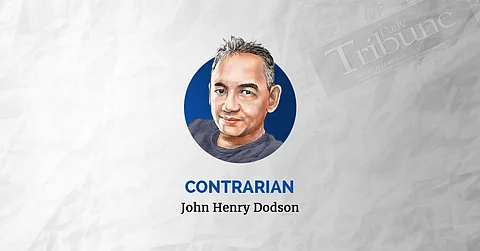
- HEADLINES
- NEWS
- PAGE THREE
- COMMENTARY
- BUSINESS
- LIFE
- ACTION
- GLOBAL GOALS
- SNAPS
- DYARYO TIRADA
- AIF
- MORE

Police forces worldwide invariably have, as their guiding principle, the pledge to “serve and protect” the public by enforcing laws, arresting criminals, and stopping the commission of crimes through proactive actions and police visibility.
For the latter, having cops on patrol, especially on poorly lit streets, makes small-time thugs think twice if it would best serve their interest to mug someone for their wallet, smartphone, and other valuables. This deterrence arises from the innate nature of society’s dregs to take the path of least resistance.
Between a man who could fight back and an elderly woman, robbers would choose the latter as an easier target, especially if no other people would come to their quarry’s aid. So, yes, cops on foot patrol or in their cruisers on a slow street-by-street roll do stop crime.
Maybe not all the time, considering every community’s policeman-to-population ratio and how large an area a particular force has to cover. However, when crimes are committed, the police response time to a call for help should fall within three minutes, or it’s bye-bye to the perpetrators.
As shown by numerous criminology studies, it’s easier for the police to dispatch first responders to the scene of a crime than to set up roadblocks and checkpoints to catch fleeing malefactors.
Against this backdrop, incidents of police high-handedness against the very sector they are supposed to serve and protect do make for cautionary tales and prompt people to always protect themselves not just from criminals, but also from the police.
This happened in good old America, where the recent death of Frank Tyson in Canton, Ohio, after police pinned him down and ignored his pleas of “I can’t breathe,” is a sickening echo of tragedies past.
Police body camera footage revealed the use of excessive force against a seemingly unarmed man. From chokeholds to knee-on-neck restraints, police tactics often prioritize control over safety, turning routine arrests into deadly encounters.
These methods, employed disproportionately against people of color in the United States, have no place in a society that values life and equal justice. The chilling refrain of “I can’t breathe” uttered by Frank Tyson tragically mirrors the last words of George Floyd in Minneapolis. Both men died suffocating under the weight of an officer’s body.
Asphyxiation tactics, which have proven fatal so many times, are as dangerous as the unnecessary use of firearms as in the senseless shooting of Philando Castile in Minnesota. Castile was pulled over for a broken tail light and subsequently killed during a traffic stop.
Closer to home in the Philippines and further afield from gun-crazy America, we’ve seen it in the murder of a 14-year-old boy by trigger-happy cops in a fatal case of mistaken identity. Therein lies the problem of shooting first before asking questions. Oops.
The indiscriminate discharge of guns by cops who should know better but do not, and the disregard for human life — these are not the hallmarks of a just society. We need police forces that prioritize de-escalation, are trained to use force only as a last resort, and understand the communities they serve.
The senseless deaths demand a fundamental change in how police across the globe interact with civilians. Comprehensive reforms that ban the excessive use of force and other dangerous restraints by the police would be a good first step to building trust between officers and the communities they are supposed to protect.
